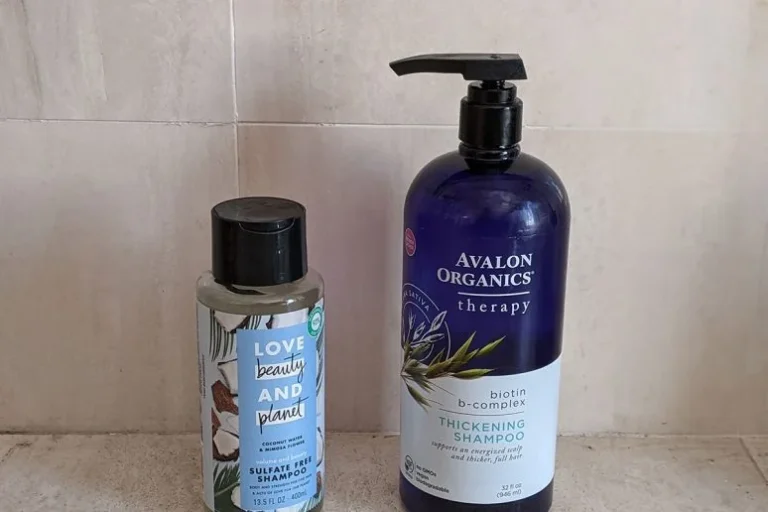Coconut oil has gained immense popularity in recent years as a versatile and natural beauty product. Many people are turning to coconut oil for hair care, praising its numerous benefits for promoting healthy and beautiful hair. In this comprehensive guide, we will explore everything you need to know about using coconut oil for hair, including its benefits, how to use it, different application methods, and tips for maximizing its effectiveness.
What is Coconut Oil?
Coconut oil is a natural oil extracted from the flesh of mature coconuts. It is rich in healthy fats, particularly medium-chain triglycerides (MCTs), which contribute to its various health benefits. Coconut oil has been used for centuries in tropical regions for cooking, skincare, and hair care. Its light texture and pleasant aroma make it a favorite among beauty enthusiasts.
The Benefits of Coconut Oil for Hair
1. Moisturizes Dry Hair
One of the primary benefits of coconut oil for hair is its ability to deeply moisturize and hydrate dry hair. It penetrates the hair shaft, providing essential moisture that helps to combat dryness and frizz. This makes coconut oil an excellent option for individuals with dry, damaged, or curly hair.
2. Reduces Protein Loss
Coconut oil has been shown to reduce protein loss in both damaged and undamaged hair. The unique structure of its fatty acids allows it to bind with the proteins in hair, preventing damage during washing and styling. This helps maintain hair strength and resilience over time.
3. Promotes Hair Growth
Using coconut oil for hair may also promote healthy hair growth. It contains essential nutrients, including vitamins E and K, and minerals such as iron and magnesium, that nourish the scalp and hair follicles. A healthy scalp is vital for optimal hair growth, and regular application of coconut oil can help achieve this.
4. Prevents Dandruff
Dandruff can be a frustrating issue for many people. Coconut oil has antifungal properties that can help combat the yeast responsible for dandruff. By moisturizing the scalp and reducing dryness, coconut oil can alleviate itching and flaking, promoting a healthier scalp.
5. Protects Against Damage
Coconut oil can help protect hair from damage caused by environmental factors such as sun exposure, pollution, and harsh weather. It forms a protective barrier around the hair strands, shielding them from harmful elements that can lead to breakage and split ends.
6. Adds Shine and Luster
Another advantage of using coconut oil for hair is its ability to enhance shine and luster. It smooths the hair cuticles, reflecting light and giving hair a healthy, glossy appearance. Regular use of coconut oil can transform dull hair into vibrant, shiny locks.
7. Natural Styling Product
Coconut oil can also serve as a natural styling product. It helps tame frizz and flyaways while providing a light hold for hairstyles. Unlike many commercial hair products that contain harsh chemicals, coconut oil is a safe and gentle option for everyday styling.
How to Use Coconut Oil for Hair
1. As a Pre-Wash Treatment
Using coconut oil as a pre-wash treatment is a great way to prepare your hair for cleansing. Here’s how to do it:
- Warm the Coconut Oil: Heat a small amount of coconut oil until it’s warm but not hot. You can do this by placing the container in warm water.
- Apply to Dry Hair: Section your hair and apply the warm oil from the roots to the tips. Focus on the ends, where damage is often more prevalent.
- Massage the Scalp: Gently massage the oil into your scalp for a few minutes to promote circulation and nourish the follicles.
- Leave it On: Allow the oil to sit for at least 30 minutes, or overnight for deeper conditioning.
- Wash It Out: Shampoo your hair as usual to remove the coconut oil. You may need to wash twice to eliminate any residue.
2. As a Deep Conditioning Treatment
For a more intensive treatment, you can use coconut oil as a deep conditioner:
- Apply Generously: Apply a generous amount of coconut oil to your clean, damp hair, focusing on the mid-lengths and ends.
- Cover with a Cap: Use a shower cap or a warm towel to trap heat, enhancing the oil’s penetration.
- Leave it On: Let it sit for at least 1-2 hours, or overnight for maximum benefits.
- Rinse and Shampoo: Rinse thoroughly and follow with your regular shampoo and conditioner.
3. As a Leave-In Conditioner
Coconut oil can also be used as a leave-in conditioner to add moisture and shine throughout the day:
- Use a Small Amount: Take a small amount of coconut oil (about a pea-sized amount) and rub it between your palms.
- Apply to Dry or Damp Hair: Gently run your hands through the ends of your hair, avoiding the roots to prevent greasiness.
- Style as Desired: Style your hair as usual. The oil will help tame frizz and add shine.
4. For Scalp Treatment
Coconut oil is beneficial for the scalp as well. Here’s how to use it as a scalp treatment:
- Warm the Oil: Warm coconut oil as described earlier.
- Section the Hair: Part your hair into sections for easy application.
- Apply to the Scalp: Using your fingertips, apply the warm oil directly to your scalp, focusing on dry or irritated areas.
- Massage: Gently massage the oil into your scalp for several minutes to improve blood circulation.
- Leave it On: Let it sit for at least 30 minutes before washing your hair.
Different Application Methods
1. Coconut Oil Hair Masks
Coconut oil can be combined with other natural ingredients to create effective hair masks. Here are a few popular recipes:
a. Coconut Oil and Honey Mask
Ingredients:
- 2 tablespoons coconut oil
- 2 tablespoons honey
Instructions:
- Mix the coconut oil and honey until well combined.
- Apply the mixture to damp hair, focusing on the ends.
- Leave it on for 30 minutes, then rinse and shampoo.
b. Coconut Oil and Avocado Mask
Ingredients:
- 1 ripe avocado
- 2 tablespoons coconut oil
Instructions:
- Mash the avocado and mix it with the coconut oil.
- Apply the mask to damp hair and leave it on for 30-45 minutes.
- Rinse thoroughly and shampoo.
c. Coconut Oil and Yogurt Mask
Ingredients:
- 1/2 cup plain yogurt
- 2 tablespoons coconut oil
Instructions:
- Combine yogurt and coconut oil in a bowl.
- Apply to hair and scalp, focusing on dry areas.
- Leave it on for 30 minutes before rinsing.
2. Coconut Oil for Hair Styling
Using coconut oil as a styling product can help achieve smooth and polished hairstyles. Here’s how to incorporate it into your styling routine:
- Use as a Frizz Control: After styling your hair, take a small amount of coconut oil and rub it between your palms. Lightly run your hands over your hair to tame frizz and flyaways.
- As a Hair Perfume: The natural fragrance of coconut oil can leave your hair smelling delightful. Apply a small amount to your hair for a subtle scent.
- For Heat Protection: If you’re using heat styling tools, apply coconut oil to your hair before styling to provide a protective barrier against heat damage.
Tips for Maximizing the Benefits of Coconut Oil for Hair
1. Choose the Right Coconut Oil
When selecting coconut oil, opt for virgin or extra virgin coconut oil. These types are minimally processed and retain more nutrients compared to refined coconut oil. Look for organic options to avoid exposure to harmful chemicals.
2. Know Your Hair Type
Different hair types may require different amounts of coconut oil. Fine hair may only need a small amount, while thick or curly hair may benefit from a more generous application. Experiment to find what works best for your hair.
3. Don’t Overdo It
Using too much coconut oil can lead to greasy hair. Start with a small amount and gradually increase as needed. Remember, less is often more!
4. Store Properly
Coconut oil can solidify at cooler temperatures. Store it in a cool, dry place and warm it slightly before use if it solidifies.
5. Be Patient
While many people notice improvements in their hair after just a few uses, it may take time to see significant results. Consistency is key, so incorporate coconut oil into your hair care routine regularly.
Frequently Asked Questions
1. Can coconut oil cause hair to become greasy?
Yes, using too much coconut oil can make hair greasy. It’s essential to use it in moderation and find the right amount for your hair type.
2. Is coconut oil suitable for all hair types?
Coconut oil is generally safe for all hair types, but its effects may vary. Fine hair may require less oil, while thick or curly hair may benefit from more.
3. Can I leave coconut oil in my hair overnight?
Yes, many people find overnight treatments with coconut oil beneficial. Just make sure to cover your pillow to avoid staining.
4. How often should I use coconut oil for hair?
The frequency of use depends on your hair type and condition. For most people, using it once a week or bi-weekly is effective.
5. **Can I use coconut oil on colored hair?
**
Yes, coconut oil is safe for colored hair and can help maintain moisture and prevent fading.
Conclusion
Coconut oil for hair is a powerful and natural solution for maintaining healthy, shiny, and beautiful locks. With its moisturizing properties, ability to reduce protein loss, and benefits for scalp health, it’s no wonder that many people are turning to coconut oil as a staple in their hair care routine. Whether used as a pre-wash treatment, deep conditioning mask, or leave-in conditioner, coconut oil offers versatility and effectiveness that can cater to various hair types and concerns.
By understanding how to properly use coconut oil and incorporating it into your hair care regimen, you can unlock its full potential. Embrace the nourishing properties of coconut oil, and enjoy the benefits of healthier, more vibrant hair.










